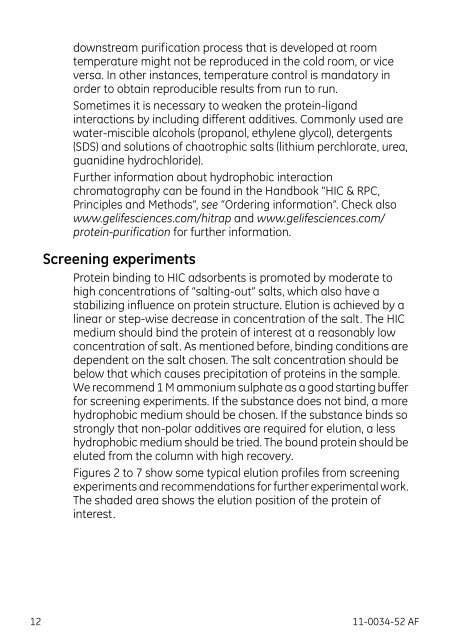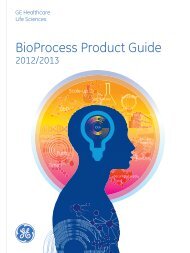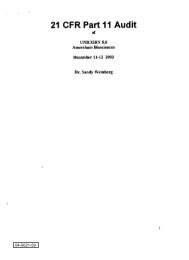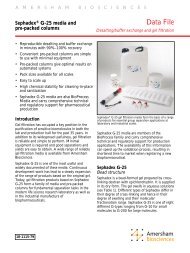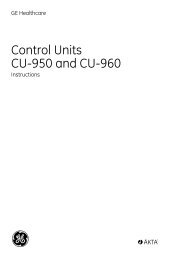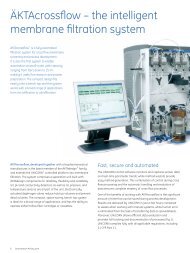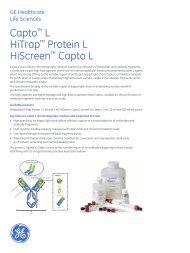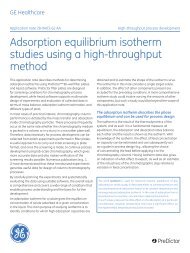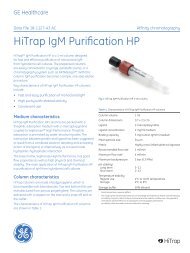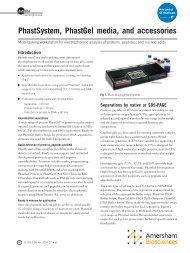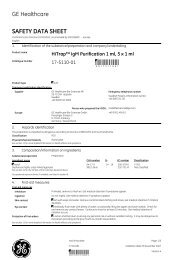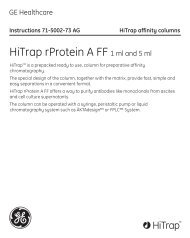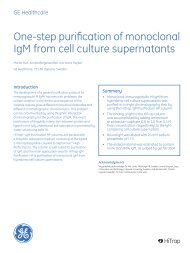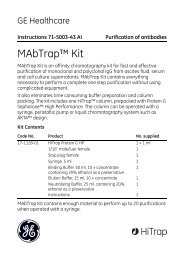HiTrap Phenyl FF
HiTrap Phenyl FF
HiTrap Phenyl FF
You also want an ePaper? Increase the reach of your titles
YUMPU automatically turns print PDFs into web optimized ePapers that Google loves.
downstream purification process that is developed at room<br />
temperature might not be reproduced in the cold room, or vice<br />
versa. In other instances, temperature control is mandatory in<br />
order to obtain reproducible results from run to run.<br />
Sometimes it is necessary to weaken the protein-ligand<br />
interactions by including different additives. Commonly used are<br />
water-miscible alcohols (propanol, ethylene glycol), detergents<br />
(SDS) and solutions of chaotrophic salts (lithium perchlorate, urea,<br />
guanidine hydrochloride).<br />
Further information about hydrophobic interaction<br />
chromatography can be found in the Handbook ‘‘HIC & RPC,<br />
Principles and Methods”, see ‘‘Ordering information”. Check also<br />
www.gelifesciences.com/hitrap and www.gelifesciences.com/<br />
protein-purification for further information.<br />
Screening experiments<br />
Protein binding to HIC adsorbents is promoted by moderate to<br />
high concentrations of ‘‘salting-out” salts, which also have a<br />
stabilizing influence on protein structure. Elution is achieved by a<br />
linear or step-wise decrease in concentration of the salt. The HIC<br />
medium should bind the protein of interest at a reasonably low<br />
concentration of salt. As mentioned before, binding conditions are<br />
dependent on the salt chosen. The salt concentration should be<br />
below that which causes precipitation of proteins in the sample.<br />
We recommend 1 M ammonium sulphate as a good starting buffer<br />
for screening experiments. If the substance does not bind, a more<br />
hydrophobic medium should be chosen. If the substance binds so<br />
strongly that non-polar additives are required for elution, a less<br />
hydrophobic medium should be tried. The bound protein should be<br />
eluted from the column with high recovery.<br />
Figures 2 to 7 show some typical elution profiles from screening<br />
experiments and recommendations for further experimental work.<br />
The shaded area shows the elution position of the protein of<br />
interest.<br />
12 11-0034-52 AF


